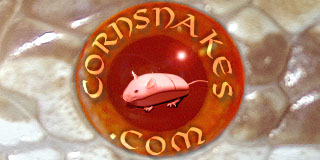Not discounting Chip's study, and for that reason I would not panic if I found a UTH at 94F, I, myself, also wouldn't be comfortable with leaving it higher than 86-88F.
Here is some food for thought.
[FONT=Arial, Verdana, sans-serif]Perception of Pain in Reptiles[/FONT]
[FONT=Arial, Verdana, sans-serif]©1999 Roger Klingenberg DVM, The Vivarium 10(4):45-49[/FONT]
[FONT=Arial, Verdana, sans-serif]Reptiles Don't Feel Pain...Do They?[/FONT]
[FONT=Arial, Verdana, sans-serif]Perhaps veterinarians and health care scientists have created the perception that reptiles don't feel pain. Historically, we just threw the poor cold-blooded beasts into the refrigerator until they were immobile enough to work on. We deluded ourselves that since they didn't respond much, it must not hurt much. Lack of response is not the same thing as lack of pain. Refrigerating herps is a practice that we now realize to be barbaric and counter-productive - it should never be used. Indeed, we now keep reptiles very warm during surgery, playing the patient on recirculating heating pads for procedures and in warm incubators post-op. We want the reptile's physiological processes at their peak to optimize immune response, drug metabolism, and healing.
[/FONT]
[FONT=Arial, Verdana, sans-serif] We don't know nearly enough about pain perception in reptiles. For instance, why is the incidence of thermal burns so high? Most reptile veterinarians have seen literally hundreds of third- and fourth-degree burns from malfunctioning hot rocks and poorly placed basking lights. One theory is that reptiles are so primitive that, by the time the burn is perceived, they don't know the appropriate response. While I don't like this theory, there are some components which may be accurate. To begin with, the reptile was able to perceive warmth as was attracted to the hot rock. Why then did it fail to perceive that the hot rock was becoming too hot? This is an alien thought for us, as we have a well-developed withdrawal reflex. If we touch anything perceived to be too hot, we withdraw immediately and reflexively, without further mental processing. This is such a strong reflex that you would be hard pressed to force yourself to touch such a hot object.[/FONT]
[FONT=Arial, Verdana, sans-serif]
[/FONT]
[FONT=Arial, Verdana, sans-serif] One theory is that the nerve endings (receptors) that are able to sense heat are different from those that sense pain. Perhaps the pain receptors are poorly developed because, during evolution, objects hot enough to burn are uncommon in the wild and such receptors therefore aren't needed. One would then lack a burn/pain withdrawal reflex.[/FONT]
[FONT=Arial, Verdana, sans-serif]
[/FONT]
[FONT=Arial, Verdana, sans-serif] Another theory is based more on learning than evolution. If the reptile doesn't associate touching an object with a certain response, perhaps it doesn't realize that moving will help. Perhaps this "learning association" theory is at work with ball pythons and boas that remain passive while a rodent perches on its coils and chews away at their flesh and bones. Could these snakes have learned that rodents are prey but don't associate them with pain?[/FONT]
[FONT=Arial, Verdana, sans-serif]
[/FONT]
[FONT=Arial, Verdana, sans-serif] There is a lot to learn but when all is said and done, we know that reptiles perceive pain. This is a given. What then can be done to control this pain?[/FONT]




